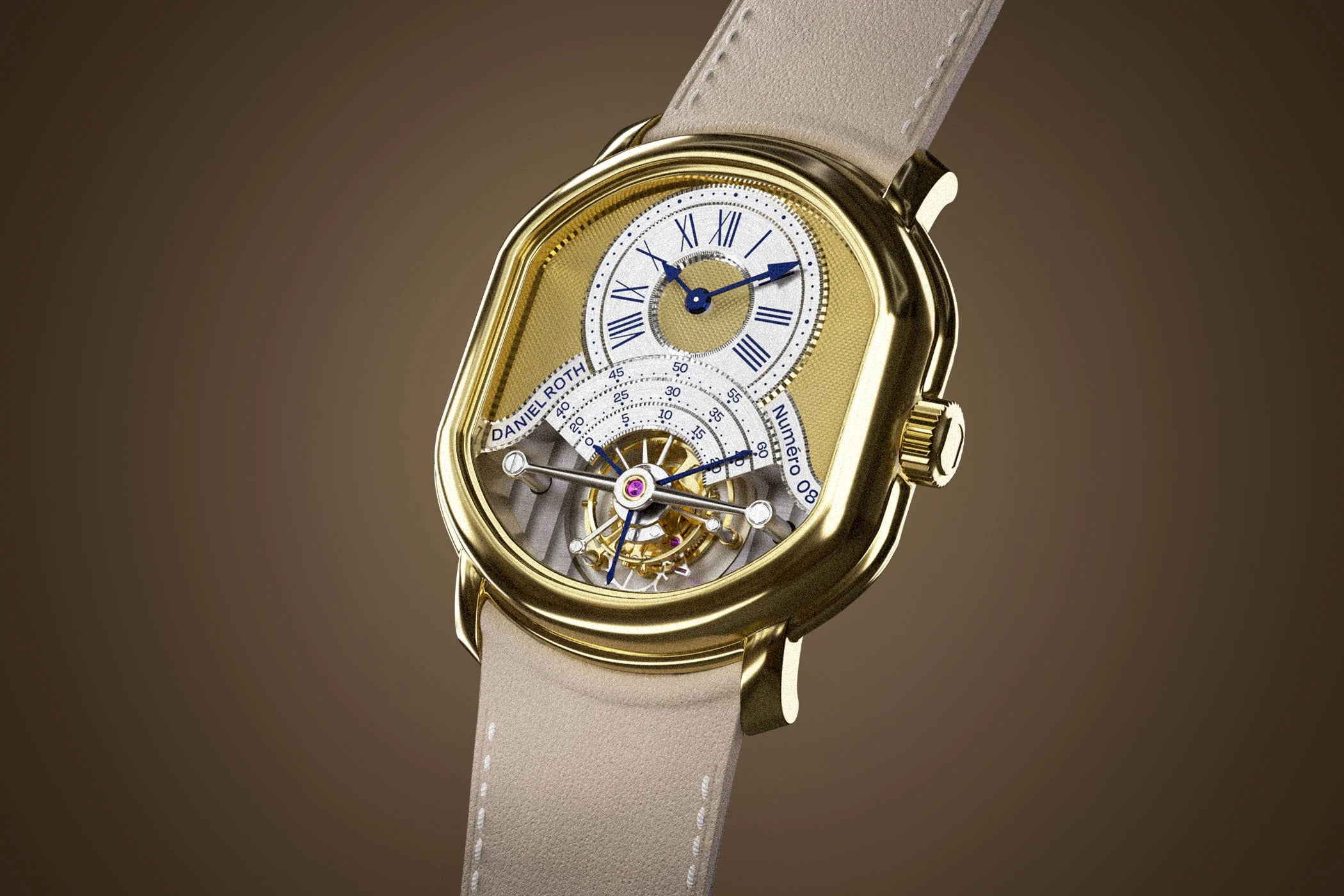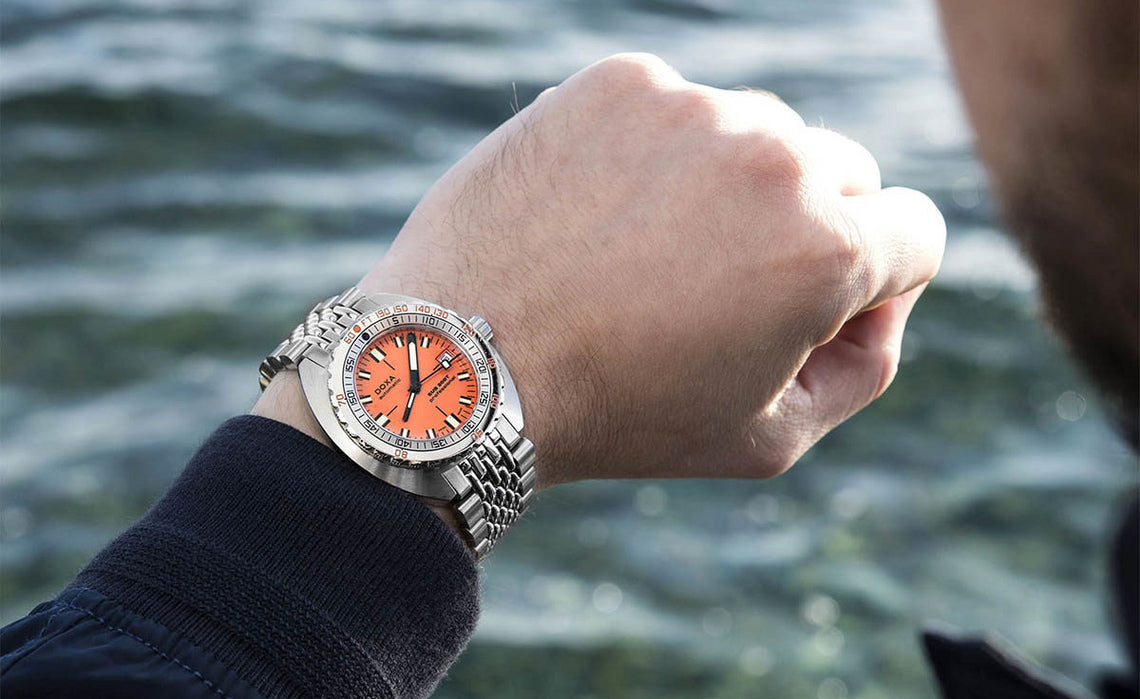
Daniel Roth: The Birth, Death and Revival of an Independent Icon
Independent Watchmaking’s Birth
There’s a lot to be said for independent watchmaking these days. From brands like Urwerk, MB&F, F.P. Journe and Richard Mille on one side of the scale to brands like Christopher Ward, Louis Erard, Baltic and MING, the independent watchmaking arena covers just about every price range, style of watch, level of craftsmanship and possible design one could think of. However, this was certainly not always the case.

Independent watchmaking as we know it was only really born in 1968 when George Daniels, the legendary English watchmaker, decided he would dedicate his life to creating mechanical masterpieces in defiance of the notion that electronics would become the future of watchmaking. And so, he mastered 32 of the 34 crafts required to build a watch and studied Breguet’s early work. In fact, by 1974, he was such a renowned expert in Breguet that he was offered the opportunity to take over the brand, but he declined in order to continue producing watches under his own name. Following Daniels in the late 1960s, independent watchmaking remained in a state of stasis, with the Quartz Crisis hindering any watchmaker’s hopes of successfully establishing a watchmaking brand focusing on high horology.
Restoring a Legend

However, the next leap forward for independent watchmaking was made when Daniel Roth came onto the scene in the late 1980s, a full 20 years after George Daniels set the scene in independent watchmaking. After learning the trade in Jaeger LeCoultre and Audemars Piguet, Roth was headhunted from AP and moved to Breguet in 1975 by François Bodet, a Chaumet executive in charge of restoring Breguet to its former glory. As part of that mission, Daniel Roth had to study Breguet’s earlier works, his artistic style, techniques and inventions, much in the same way that George Daniels already had. In 1987, following the Chaumet brother’s catastrophic financial demise, Breguet was sold to Investcorp, and a year later, Daniel Roth set off on his own to create his eponymous brand.
The Birth of Daniel Roth

Launching his brand in 1988 as the effects of the quartz crisis began to ease and an appreciation for the mechanical side of watchmaking began to grow, Daniel Roth set about creating watches of a heartier, more spirited style than the quartz watches that had flooded the market over the prior 15 years. Characterised by their unconventional layouts, a unique “ellipsocurvex” case that was both square and round at the same time, and the unmistakable design codes Daniel Roth had discovered, mastered and pioneered at Breguet, Daniel Roth’s own timepieces were entirely unconventional, immediately popular and understandably, Roth’s timepieces reflected his time at Breguet.

Featuring hand-made engine-turned dials, blued hands, precious metal cases and a high degree of hand finishing on his movements, Daniel Roth’s timepieces revived the idea that watchmaking, as a traditional craft, could still succeed as an entrepreneurial enterprise, even after the quartz crisis. Following the debut of his Double Face Tourbillon ref. C187 in 1989, Roth’s brand was off the ground. Featuring a re-interpretation of the work he did in Breguet whereby he would adapt Abraham-Louis’ original work for Breguet, the Double Face Tourbillon ref. C187 was the perfect place for Daniel Roth to begin. A visually dynamic and complex complication with a storied past, the tourbillon was the ideal poster child for the mechanical renaissance that Daniel Roth’s brand would symbolise. In the early 1990s, Rpth’s work began to garner the attention of John Asprey, who was leading his family’s business, the esteemed bastion of luxury goods Asprey London. Asprey commissioned 24 tourbillon watches from Roth, which provided him with a much-needed boost.
The Growth of Daniel Roth

Following his work with the tourbillon, Roth went on to develop a trio of chronographs, such as the C147. Perhaps rather romantically, it was powered by the Lemania cal. 2320, which was an obvious choice for Roth, given he had worked with it during his time at Breguet. Also, it was one of the finest chronograph movements on the market at the time, which didn’t hurt either. The other two models that he produced were a split-second chronograph, which was around the same time as the C147 and a monopusher chronograph sometime later. Of course, as with any brand, Daniel Roth also produced a trio of time-only models, the C107, the C167 and the C127, which was debuted in 1991 and released for sale in 1993.

From there, Roth would begin to experiment with complications once again, with the perpetual calendar piquing his interest, and so he debuted a prototype of the C117 in 1991, the same year he debuted the C127 mentioned above. Having tackled the tourbillon, the chronograph, and the perpetual calendar, and after releasing some time-only models, Roth set his eyes on perhaps the most difficult foe of all, the minute repeater. Powered by the Lemania cal. 389, and with only three examples produced, each in a different colour of gold, the C189 was launched in 1995 and remains one of Roth’s rarest watches.

However, while the brand was reaching the peak of its powers, it would also prove to be a rather tumultuous time for Daniel Roth’s brand as his financier Siber Hegner pulled funding. Help came from Singapore-based The Hour Glass, who had purchased a stake in the brand in 1994, but this was short-lived following the Asian Financial Crisis, which forced The Hour Glass to rethink their business strategy. As such, The Hour Glass sold Daniel Roth and their other independent brand, Gerald Genta, to Bulgari in 2000, marking the end of Daniel Roth’s involvement in his namesake brand.
The Death and Revival of Daniel Roth

Following their sale to Bulgari, Daniel Roth’s appeal as an independent watchmaker began to wane. Bulgari would infuse their design language with Daniel Roth’s interesting history-rich take on watchmaking to create timepieces that were a clear step away from Daniel Roth’s own work. These resulting timepieces were not as successful as Daniel Roth’s original watches, and so the brand faltered into obscurity. From a position of incredible importance within the independent watchmaking scene to an obscure watchmaker owned by a larger brand that was moving away from the ethos that created its success, Daniel Roth’s devolution was a shame.

Following LVMH’s acquisition of Bulgari in 2011, Daniel Roth remained in a state of turmoil, with LVMH not doing the required work to revive the brand as it deserved until now. Finally, 12 years after they acquired the iconic brand, LVMH announced the brand’s much-needed revival with their own Souscription Tourbillon, an update of the first watch Daniel Roth released in 1989, the C187, which will be delivered in early 2024. With 20 pieces offered at a pretax price of 140,000 francs, or $155,000, this new model sold out in a matter of weeks. With the mission of respecting Daniel Roth’s original creations but not staying still, as said by Michel Navas, who co-founded La Fabrique du Temps, which is now owned by LVMH and is leading Daniel Roth’s revival, the brand is finally back in good hands, as it so deserves.


Leave a comment
This site is protected by hCaptcha and the hCaptcha Privacy Policy and Terms of Service apply.